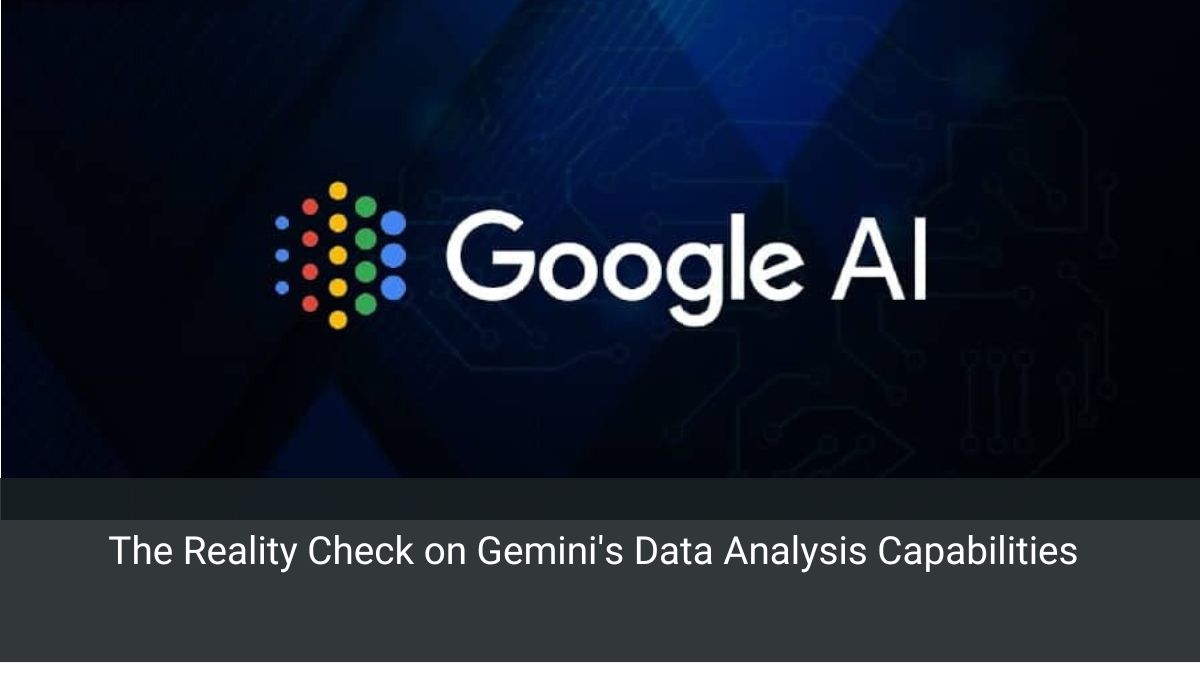AI
The Reality Check on Gemini’s Data Analysis Capabilities

In the ever-evolving landscape of artificial intelligence, Google’s Gemini models have been making waves with bold claims about their data processing prowess. But as the dust settles, researchers are uncovering a stark contrast between marketing hype and real-world performance. Let’s dive into the heart of this AI conundrum and explore what it means for the future of data analysis.
The Promise of Long Context
Google’s latest AI marvels, Gemini 1.5 Pro and 1.5 Flash, burst onto the scene with a tantalizing promise: the ability to process and analyze vast amounts of data. With context windows capable of ingesting up to 1.4 million words, these models were touted as game-changers in the realm of AI-powered analysis.
As someone who’s spent years tinkering with various AI models, I was initially thrilled by the prospect. Imagine an AI that could breeze through entire books, lengthy reports, or hours of video footage, extracting meaningful insights with ease. It seemed too good to be true – and as recent studies suggest, it just might be.
Reality Bites: The Performance Gap
Struggling with the Basics
Two separate studies have cast a shadow over Gemini’s supposed capabilities. In one test, researchers challenged the models with true/false statements about fiction books. The results were sobering:
- Gemini 1.5 Pro managed a mere 46.7% accuracy rate
- Gemini 1.5 Flash fared even worse, with only 20% correct answers
To put this in perspective, you’d have better luck flipping a coin than relying on these advanced AI models for book comprehension. It’s a humbling reminder that even our most sophisticated AI still struggles with tasks that humans find relatively straightforward.
Video Analysis: A Blurry Picture
Another study focused on Gemini 1.5 Flash’s ability to analyze video content. The results were equally underwhelming:
- In a test transcribing six handwritten digits from a 25-image slideshow, Flash achieved only 50% accuracy
- When the task was increased to eight digits, accuracy plummeted to around 30%
These findings paint a picture of an AI that’s more myopic than magical when it comes to processing visual information over time.
The Hype vs. Reality Disconnect
Google’s marketing machine has been working overtime, positioning Gemini’s long context capabilities as a revolutionary leap forward. Yet, the research suggests a significant gap between these lofty claims and real-world performance.
This disconnect isn’t just a Google problem – it’s symptomatic of a broader issue in the AI industry. As companies race to outdo each other with ever-more-impressive specs, the actual utility of these advancements often lags behind.
The Benchmarking Dilemma
One of the core issues highlighted by researchers is the inadequacy of current benchmarking practices. Many commonly used tests, like the “needle in a haystack” challenge, focus on simple information retrieval rather than complex reasoning.
Michael Saxon, a PhD student involved in one of the studies, puts it bluntly: “Our existing benchmark culture is broken.” This sentiment echoes throughout the AI research community, highlighting the urgent need for more robust, real-world testing methodologies.
Implications for the AI Industry
The revelations about Gemini’s performance limitations have broader implications:
- Trust and Transparency: As the gap between marketing claims and actual performance widens, it erodes trust in AI companies and their products.
- Investment Caution: The hype cycle around generative AI may be cooling, with investors becoming more skeptical of grandiose claims.
- Refocusing on Practical Applications: There’s a growing emphasis on finding concrete, valuable use cases for AI rather than chasing headline-grabbing specs.
- The Need for Better Evaluation: The AI community must develop more sophisticated, relevant benchmarks to accurately assess model capabilities.
Looking Ahead: A Call for Realism
As we navigate this complex landscape, it’s crucial to maintain a balanced perspective. AI has made tremendous strides, but we must temper our expectations with healthy skepticism.
For developers and researchers, this means:
- Prioritizing rigorous, real-world testing over flashy demos
- Being transparent about model limitations and potential biases
- Focusing on solving specific, valuable problems rather than chasing arbitrary performance metrics
For businesses and end-users, the takeaway is clear: approach AI capabilities with cautious optimism. Verify claims independently and focus on how these tools can solve real-world problems rather than getting caught up in the hype.
Embracing the AI Journey
The story of Gemini’s data analysis capabilities is a reminder that AI development is a journey, not a destination. While the current performance may fall short of the lofty promises, it doesn’t negate the progress being made.
As we move forward, let’s champion a more nuanced, honest dialogue about AI capabilities. By grounding our expectations in reality and focusing on tangible improvements, we can harness the true potential of AI to solve meaningful problems.
The future of AI is bright – but it’s a future we’ll reach through incremental progress, rigorous testing, and a commitment to transparency. Let’s embrace the challenge and continue pushing the boundaries of what’s possible, one realistic step at a time.
